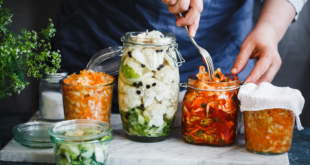Introduction
Fusion cuisine represents a dynamic intersection of culinary traditions, blending elements from diverse cultures to craft innovative and unique dishes. This gastronomic approach celebrates diversity and creativity, offering diners novel taste experiences that transcend conventional boundaries.
The Origins and Evolution of Fusion Cuisine
The concept of fusion cuisine emerged as global travel and migration facilitated the exchange of culinary ideas and ingredients. Chefs began experimenting by incorporating unfamiliar spices, techniques, and components into traditional recipes, leading to the birth of fusion dishes that delighted adventurous palates. For instance, the creation of “Indo-Chinese” cuisine in India, which melds Chinese cooking methods with Indian flavors, exemplifies early fusion efforts. Mob
Current Trends Shaping Fusion Cuisine
Global Flavor Integration
In 2025, there’s a notable trend of combining flavors from various cuisines to create harmonious and unexpected culinary experiences. Examples include Korean-Mexican fusion tacos that blend spicy kimchi with tender beef, and Italian-Japanese dishes like miso-infused pasta. These combinations reflect a global palate’s appetite for diverse and bold flavors.
Third-Culture Cuisine
Third-culture cuisine involves blending multiple cultural influences seamlessly, resulting in dishes that honor and celebrate both heritages. This approach not only introduces new flavors but also fosters a deeper appreciation for cultural diversity. For example, a chef might combine traditional Italian pasta-making techniques with Japanese miso flavors, creating a unique culinary experience.
Chaos Cooking
Popularized on social media platforms like TikTok, chaos cooking encourages culinary experimentation by combining unexpected ingredients to craft bold, experimental dishes. This trend appeals to a younger audience eager to share innovative food experiences online. Examples include birria ramen bowls and bao buns filled with hot fried chicken, showcasing a playful approach to fusion cuisine.

The Role of Technology and Social Media
Technology and social media have significantly accelerated the evolution of fusion cuisine. Platforms like Instagram and TikTok allow chefs and home cooks to share their culinary experiments, inspiring others and fostering a global community of food innovators. This digital exchange has led to rapid dissemination of new fusion recipes and trends, influencing dining preferences worldwide.
Culinary Education and Globalization
As culinary schools incorporate diverse global cuisines into their curricula, aspiring chefs are equipped with the skills to experiment and innovate. This education, coupled with globalization, has led to a generation of chefs unafraid to blend traditional techniques with modern twists, further propelling the fusion cuisine movement.
Challenges and Considerations
While fusion cuisine offers exciting possibilities, it also presents challenges:
Cultural Sensitivity: Respecting the origins of the culinary elements being combined is crucial to avoid cultural appropriation or misrepresentation.
Flavor Balance: Successfully merging flavors requires a deep understanding of each cuisine’s fundamentals to ensure the resulting dishes are harmonious and appealing.
Authenticity vs. Innovation: Striking a balance between honoring traditional recipes and embracing innovative techniques is key to creating dishes that resonate with a broad audience.
The Future Outlook
The future of fusion cuisine appears vibrant, with ongoing experimentation and blending of culinary traditions. As global connectivity continues to rise, so will the opportunities for chefs to explore and create. However, it’s essential to approach fusion with respect and understanding, ensuring that the resulting dishes honor the rich histories and cultures they represent.
For more insights into the evolving world of fusion cuisine and culinary trends, visit 365Tastes.
 Tastes | Live healthy every day
Tastes | Live healthy every day


